Ælfgif-who? provides short biographies of early medieval English women. Click on the podcast player if you’d like to hear this newsletter read aloud in my appealing Yorkshire accent.

Ælfgifu of Northampton married Cnut during his father Swein’s conquest of England, which began in 1013. She was part of a prominent but rebellious Mercian family, the daughter of the Ealdorman of Northumbria Ælfhelm and his wife Wulfrune. Ælfhelm had been murdered, apparently by King Æthelred, in 1006, and by 1013 the family was under suspicion again for supporting the Danish invaders, and many more of them were killed for going against the king. Ælfgifu’s brothers were blinded. Ælfgifu’s marriage to Cnut was key to the ultimate success of the conquest, as Swein and Cnut were able to establish themselves with the north midlands as a base. By 1016 Swein was dead, King Æthelred was dead, and the conquest belonged to Cnut.
Ælfgifu and her remaining family had backed the winning horse, but after the conquest events become more complex. Though Ælfgifu had quickly provided Cnut with two sons - Swein and Harald, named after Cnut’s father and grandfather - in 1017 he decided to make a second advantageous marriage. His connection to Ælfgifu had provided a platform for conquest, but a marriage to Æthelred’s widowed queen Emma would help him consolidate it.
With this marriage Ælfgifu’s situation became complicated. Emma, a consecrated queen who represented continuity with the conquered regime, became foregrounded in Cnut’s rule. She ranked high on the witness lists of his charters, often jointly alongside Cnut, and as ‘regina’. Conversely, Ælfgifu is missing from the source record for decades after.
It was not unusual in both Scandinavia and England for kings to have concubines. But in Cnut’s own law codes issued in 1020, he stresses the illegality and un-Christianness of polygamy, especially for foreigners such as himself:
…If anyone has a lawful wife and also a concubine, no priest is to do for him any of the offices which must be done for a Christian man, until he desists and atones for it as deeply as the bishop directs him, and desists from such for ever. Foreigners, if they will not regularise their marriage, are to depart from the land with their goods and their sins.1
It is not easy to square the basis of Cnut’s marital relations with his own laws. What must be remembered is that marriage in this period was not a cut-and-dry, regulated process. This law about concubinage being a matter for a bishop to deal with is certainly not as harsh as the law about women’s adultery, which prescribes for them to have their property removed and given to their husband, as well as having her nose and ears cut off. It is possible that Cnut did not consider himself to have a concubine, but two lawful wives. There is no reason to assume that just because Cnut married Emma, that he repudiated his first wife or that Ælfgifu’s status was lowered to concubine. Nor is there evidence that he and Ælfgifu continued to have an intimate relationship after his second marriage; by 1020 he’d had a son and a daughter with Emma, but as far as we can see Ælfgifu did not have any more children.
Arguments must have been made to justify Cnut’s multiple concurrent marriages. Cnut’s situation precipitated an acknowledgement of Ælfgifu’s status. If he had repudiated her - denied that their marriage ever had legitimacy - that would have necessitated a refusal to acknowledge her sons as heirs. But by 1028 Cnut was a king of three countries, and it was in his advantage to have as many heirs as possible to manage his small empire.
In 1030, Cnut sent Ælfgifu and their teenage son Swein to co-rule Norway, which Cnut had recently acquired, like England, through conquest. By sending Ælfgifu and Swein, Cnut was able to indirectly rule Norway through his own dynasty instead of leaving the running of things to the Norwegian lords. This action makes it certain that Cnut intended for his sons from his first marriage to remain legitimate after his second marriage. It also demonstrates a continuing trust and political alliance between Cnut and Ælfgifu - her ongoing influence in her husband’s rule after he had married someone else is unusual.
Ælfgifu and Swein ruled Norway for four years. This period became known as ‘Alviva’s time’, and she gained a reputation as tyrannical ruler who taxed the population heavily, causing the Norwegians to rebel against her. Ælfgifu and Swein were driven out, with Swein dying soon after in Denmark.
Ælfgifu made it back to England, however, around the time that Cnut died in 1035. This was advantageous for her, as it allowed her to participate in the ensuing succession dispute and act on behalf of her living son Harald. Succession disputes were arenas in which mothers could exert a great deal of influence, and in turn face harsh defamation.
Initially, a meeting of all the powerful men of the realm was held in Oxford to decide who should be king. The outcome of this meeting was that Harald should rule Mercia and Northumbria while Emma’s son Harthacnut should rule Wessex.
A letter, sender unknown, sent to Emma’s daughter Gunnhild at the German court where she was the queen of Henry III, informed her that Ælfgifu was working on her son’s behalf to undermine Harthacnut’s rule, by holding feasts, sending gifts, and flattering nobles. Harthacnut was losing his grip on Wessex as opinion swung towards Harald.
By 1036, due partly to Harthacnut’s absence while he was attempting to consolidate rule in Denmark, and partly to Ælfgifu’s northern support and campaign against Harthacnut, Harald won the succession dispute for the English throne.
There has even been some speculation that Ælfgifu, as the figure with allies, ruled on behalf of her son, but little evidence survives of his reign. Harald died in 1040 and was buried at Westminster, and his brother Harthacnut succeeded him, then had him exhumed, beheaded and thrown into the marshes.
Ælfgifu’s fate is unknown after fortunes turned against her. Her reputation was in tatters in both Norway and England. It was during Harthacnut’s reign that Emma had a literary work written about the events since the Danish conquest, a work which has been named the Encomium Emmae Reginae. A political justification of Emma’s actions lies behind every word. Its narrative casts aspersions on the parentage of the late King Harald, stating that Ælfgifu was a mere concubine, and that Harald was secretly the child of a servant placed into her bed. It even implicates Ælfgifu in the murder of one of Emma’s sons from her marriage to Æthelred.
All evidence indicates that these accusations do not reflect reality - but unlike Emma, Ælfgifu seemingly did not get chance to produce a work telling her side of events. Because of this, the formidable Emma is the more famous queen, while Ælfgifu has been sidelined in history. That does not mean Ælfgifu was not a rival for Emma, and every bit her match.
Translation by Dorothy Whitelock.

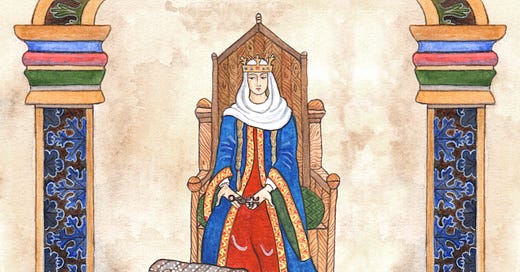




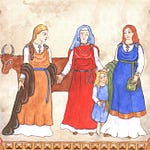

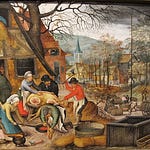
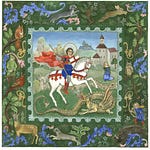



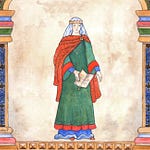
Share this post